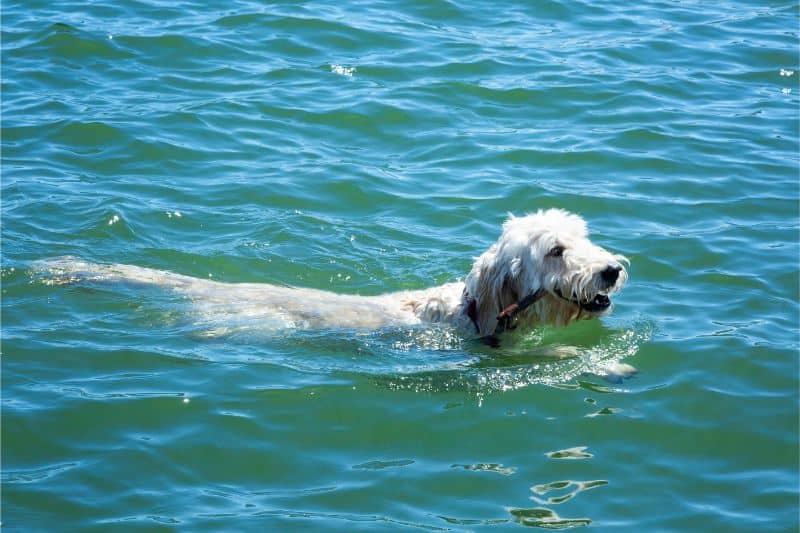In The Swim Of Things: Where Should And Shouldn’t Your Dog Swim?

The weather is heating up, and we can’t wait to get out on the boat, in the lake, and to the pool this summer. Of course, our dogs almost always accompany us on these water adventures. But it begs the question – where should and shouldn’t your dog swim? Are there hazards to be aware of when it comes to dogs getting wet?
Safety First
Swimming can be great exercise for dogs, and with over 50% of pets in the US either overweight or obese, it’s also a great way for your dog to slim down. However, not all dogs are natural swimmers, and some may not enjoy the water at all.
Dogs with long, heavy bodies and short legs are not naturally designed to swim well. Older dogs and brachycephalic breeds may also be at risk in the water. If your dog doesn’t know how to swim yet, take it slow and teach with a positive and patient approach.
It’s always a good idea to have your dog wear a life vest when swimming, no matter how strong a swimmer they are.
Where Shouldn’t Your Dog Swim?
Let’s begin with some tips about safety dangers and what you might want to avoid when you take your dog for a swim.
Strong currents – avoid strong currents and fast flowing brooks and streams. Fast flowing water can catch your dog unaware and sweep him away before you have a chance to react.
Underwater hazards – shells, rocks, and unseen changes in depth can all pose risks to your dog.
Cold weather swims – your pet could be exposed to hypothermia if she’s allowed to swim when it’s too cold. This can tire her out much faster and put her at risk for drowning.
Blue green algae – during warmer months, algae blooms are common. These are toxic to dogs, and can cause GI upset, skin, mouth, and eye irritation. Most dogs swallow some water while swimming, so avoid these areas altogether.
Stagnant water – lakes and even rivers can become stagnant and warmer in the summer, which makes them the perfect breeding ground for bacteria and parasites that can wreak havoc on your dog’s health.
Anywhere unsupervised – it may go without saying, but your dog should never be left alone near water or when swimming. Even strong swimmers can get out too far and tire, and not be able to get back to you. Dogs in pools must be taught how to exit the pool on their own, in case they accidentally fall in.
Where Should Your Dog Swim?
Now for the fun! If you are an expert at reading currents and water conditions, and your dog has a strong recall, you might explore the following options:
Lake, river and creek fun – remember the life jacket! Other must-haves include fresh water for drinking, a towel for drying off ears and coat, and of course tennis balls or floating dog toys for added fun.
Beach time – at the beach, dogs love to run and splash in the surf. The salt water does need to be rinsed off after he’s in the water, or it can irritate his skin and ears. Make sure your dog stays away from any dead fish he may encounter, as it can make him sick. Many dogs love social time with other dogs at the beach, and get great interaction there.
Your backyard swimming hole – otherwise known as a pool, this is a great way to get in a dog swim without the worry of underwater hazards or currents. Have a dog friendly ramp at the opposite end of the pool from the stairs, so your dog has two choices to get out and teach him how to navigate both. Make sure he has access to fresh water and shade at all times.
Happy swimming, from Beverly Hills Veterinary Associates!
